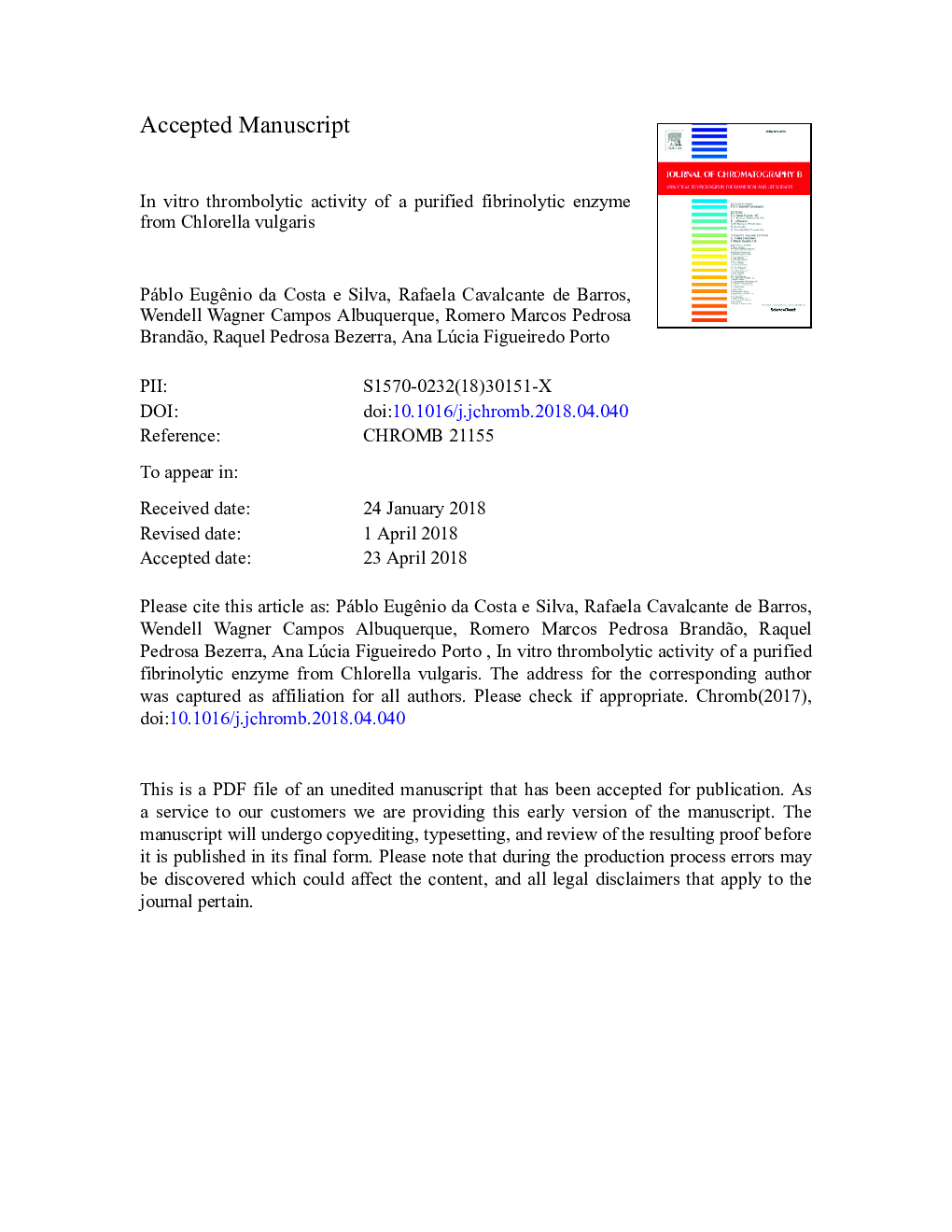| Article ID | Journal | Published Year | Pages | File Type |
|---|---|---|---|---|
| 7615025 | Journal of Chromatography B | 2018 | 20 Pages |
Abstract
A fibrinolytic enzyme was produced by microalga Chlorella vulgaris cultivated in autotrophic and mixotrophic conditions added corn steep liquor, purified by a single chromatographic step, then biochemical characterization and in vitro thrombolytic activity was performed. Maximum cell concentration (1637.45â¯Â±â¯15â¯mgâ¯Lâ1) and productivity (181.93â¯mgâ¯Lâ1â¯dayâ1) was obtained in mixotrophic culture using 1% corn steep liquor. Enzyme-extracted microalgal biomass was purified by acetone precipitation and DEAE Sephadex anion exchange chromatography up to 2 fold with recovery of 4.0%. After purification, fibrinolytic activity was 1834.6â¯Uâ¯mgâ1 and 226.86â¯mm2 by spectrophotometry and fibrin plate assays, respectively. SDS-PAGE results exhibited a protein band of about 45â¯kDa and fibrinolytic band was detected by fibrin zymography. Enzyme activity was enhanced in the presence of Fe2+ and inhibited by phenylmethane sulfonyl fluoride (PMSF) and ethylenediamine tetracetic acid (EDTA), which suggest it to be a metal-dependent serine protease. The extract also showed a red blood cell lysis <4% and in vitro thrombolytic activity of 25.6% in 90â¯min of reaction. These results indicate that the fibrinolytic enzyme from C. vulgaris may have potential applications in the prevention and treatment of thrombosis.
Related Topics
Physical Sciences and Engineering
Chemistry
Analytical Chemistry
Authors
Páblo Eugênio da Costa e Silva, Rafaela Cavalcante de Barros, Wendell Wagner Campos Albuquerque, Romero Marcos Pedrosa Brandão, Raquel Pedrosa Bezerra, Ana Lúcia Figueiredo Porto,
